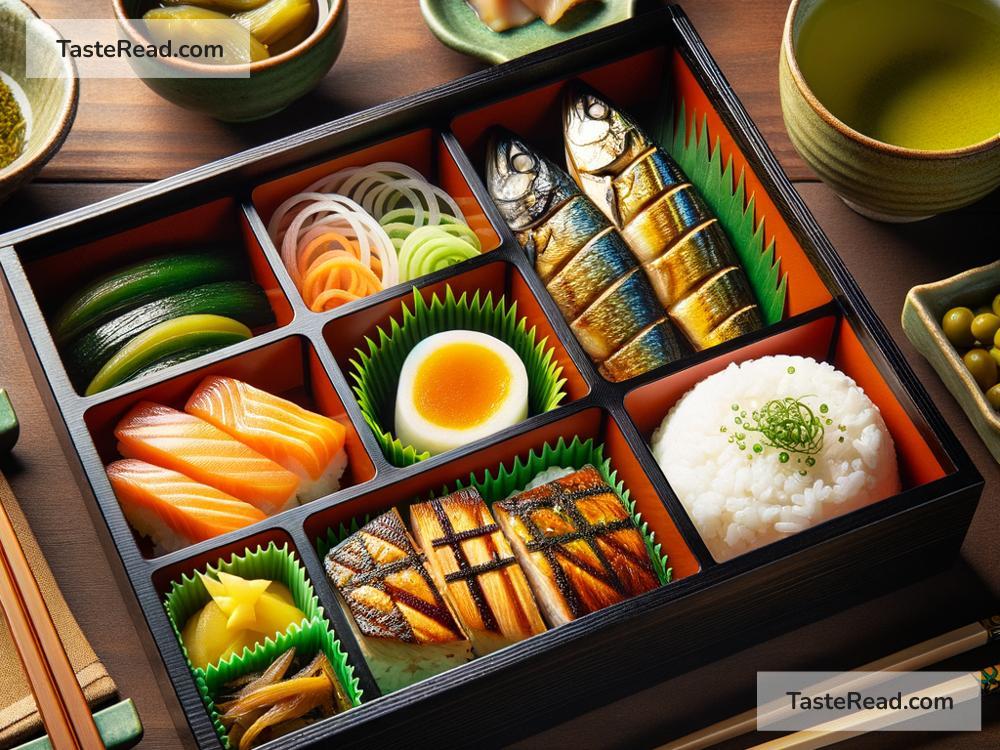The Origins of the Japanese Bento: A Journey Through History
When you think of Japanese culture, one iconic image that might come to mind is the bento box—a neatly packed meal that is both practical and artistic. With its colorful arrangement of rice, vegetables, meat, and fish, the bento embodies Japanese values of balance, precision, and beauty. But where did this unique tradition come from? This blog explores the fascinating history of the bento and how it became an essential part of Japanese daily life.
What Is a Bento?
Before we dive into its history, let’s first understand what a bento is. A bento is a single-portion meal packed in a box, usually eaten at work, school, or while traveling. The box can be simple or decorative, ranging from plastic containers to wooden lacquers. Bentos are often arranged thoughtfully, balancing nutrition, taste, and aesthetics. Common components include rice, a protein like chicken or fish, and a mix of pickled and fresh vegetables.
Bento-making has also become an art form in modern times, with some people creating “character bentos” (known as kyaraben) that portray cute animals or popular cartoon characters. While the modern bento is bursting with creativity, its roots stretch back more than 1,000 years.
Ancient Beginnings: Bento in the Kamakura Period
The history of the bento dates back to Japan’s Kamakura Period (1185–1333). During this time, people began packing dried rice (hoshii) to carry with them on long journeys or to work in the fields. Dried rice was convenient because it could be eaten as is or rehydrated with water. Travelers and workers would also include pickles, dried fish, or other preserved foods to accompany the rice, creating an early version of the bento.
These meals allowed people to eat on the go, sparking the development of portable food culture in Japan. The word “bento” actually derives from the Chinese word biàndāng, meaning “convenience,” which perfectly describes the purpose of these portable meals.
Development in the Edo Period
During the Edo Period (1603–1868), evolving lifestyles in Japan brought new changes to the bento tradition. This era saw the introduction of lacquered wooden boxes for bento, which were designed for more formal occasions or picnics known as hanami (cherry blossom viewing). These elaborately designed boxes often contained beautifully arranged food, reflecting the aesthetics and culture of Edo society.
Bentos became particularly popular during Noh and Kabuki theater performances. Audience members would bring their bento meals to enjoy during breaks in the plays, making these packed lunches a staple of entertainment outings. Typical theater bentos included rice balls (onigiri) wrapped in seaweed and a variety of colorful side dishes.
Additionally, travelers in the Edo period would carry koshibento (waist bento), which were small wooden or woven lunch boxes tied to their waists. These bentos often contained rice balls and other light snacks, demonstrating how bento culture continued to intertwine with mobility.
The Birth of Ekiben: Bento at Train Stations
By the Meiji Era (1868–1912), Japan had begun industrializing, and the invention of the train transformed the way people traveled. With railways expanding across the country, hungry passengers needed meals that were quick and convenient. This led to the emergence of ekiben (train station bento), which remains a beloved tradition in Japan.
The first-ever recorded ekiben was sold in 1885 at Utsunomiya Station in Tochigi Prefecture. It reportedly consisted of rice balls and pickled radish wrapped in bamboo leaves—a far cry from the elaborate ekiben seen today. Over time, station vendors began creating regional specialties to showcase local ingredients, adding another layer of uniqueness to the bento experience. Travelers could not only satisfy their hunger but also get a taste of the area’s culinary culture.
Modern Times: A Staple of Everyday Life
As Japan modernized throughout the 20th century, bento culture adapted to fit new lifestyles. The rise of factory-made bento boxes, convenience stores, and microwavable meals made bentos more accessible to busy workers and students. Obento, or school lunch bento, became a daily ritual for children. Mothers often take great care in preparing these lunches, making them visually appealing and packed with love.
In recent decades, bento has expanded beyond Japan’s borders, gaining popularity around the world. With its focus on portion control and artistic presentation, people everywhere have embraced bento boxes as part of healthy eating habits.
The Bento’s Timeless Appeal
The bento is more than a simple lunch—it’s a reflection of Japanese culture. Its roots in practicality and portability evolved over centuries to include artistry, regional pride, and family tradition. Whether it’s the rustic dried rice of the Kamakura period, the elegant theater bentos of Edo, or the modern-day convenience store bento, the history of the bento showcases Japan’s ability to create beauty from everyday life.
As time goes on, the bento box continues to evolve while holding onto its ancient origins. So next time you open a bento box, remember that you’re not just enjoying a tasty meal—you’re also experiencing centuries of history, creativity, and cultural pride packed neatly into one humble box.


